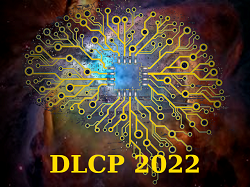Speakers
Description
The TAIGA experimental complex is a hybrid observatory for high-energy gamma-ray astronomy in the range from 10 TeV to several EeV. The complex consists of such installations as TAIGA-IACT, TAIGA-HiSCORE and a number of others. The TAIGA-HiSCORE facility is a set of wide-angle synchronized stations that detect Cherenkov radiation scattered over a large area. With TAIGA-HiSCORE data provides an opportunity to reconstruct shower characteristics, such as shower energy, direction of arrival, and axis coordinates. The main idea of the work is to apply convolutional neural networks to analyze HiSCORE events, considering them as images. The distribution of registration times and amplitudes of events recorded by HiSCORE stations is used as input data. The paper presents the results of using convolutional neural networks to determine the characteristics of air showers. It is shown that even a simple model of convolutional neural network provides the accuracy of recovering EAS parameters comparable to the traditional method. Preliminary results of air shower parameters reconstruction obtained in a real experiment and their comparison with the results of traditional analysis are presented. The work was supported by the Russian Science Foundation, grant №22-21-00442
| Agreement to place | Participants agree to post their abstracts and presentations online at the workshop website. All materials will be placed in the form in which they were provided by the authors |
|---|

